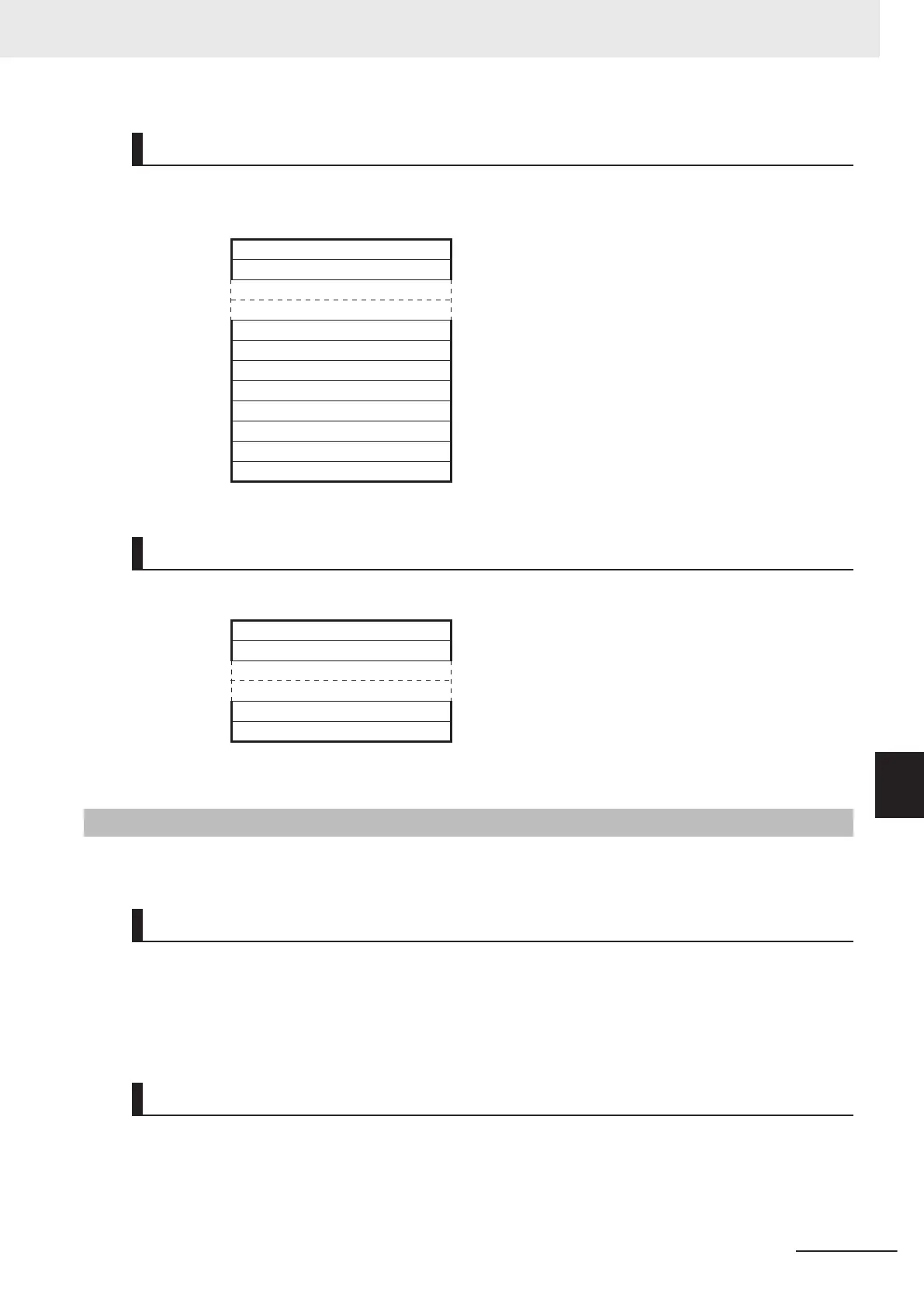Fixed-length 8-byte Data
Applicable data types: LINT, ULINT, ULINT BCD, LREAL, and LWORD
Data Format
USINT Data Type
USINT 00 hex
UINT Num of Elem (L) 01 hex
(H) 00 hex
Data
(Least-significant byte)
:
:
:
:
:
:
(Most-significant byte)
Boolean Data
Data Format
USINT Data Type C1 hex
U
SINT 00 hex
UINT Num of Elem (L) 01 hex
(H) 00 hex
USINT Status 01 hex: TRUE, 00 hex : FALSE
USINT
Forced set/reset information*
01 hex: Forced, 00 hex: Not forced
*1. Specify 0 when writing data.
8-7-4
Derived Data Types
Arrays and structures are handled as derived data types.
Accessing One Member
The data format for accessing one element of an array or one member of a structure is the same as
the data format for the corresponding elementary data type.
Example: If you specify V
ar[5] to access a variable defined with UINT Var[10], use the same data for-
mat as for UINT data.
Accessing More Than One Element at the Same Time
Arrays
• Accessing an Entire Array
If you access an array variable without specifying an element, the entire array is accessed.
8 CIP Message Communications
8-89
NJ/NX-series CPU Unit Built-in EtherNet/IP Port User’s Manual (W506)
8-7 Variable Data Types
8
8-7-4 Derived Data Types
